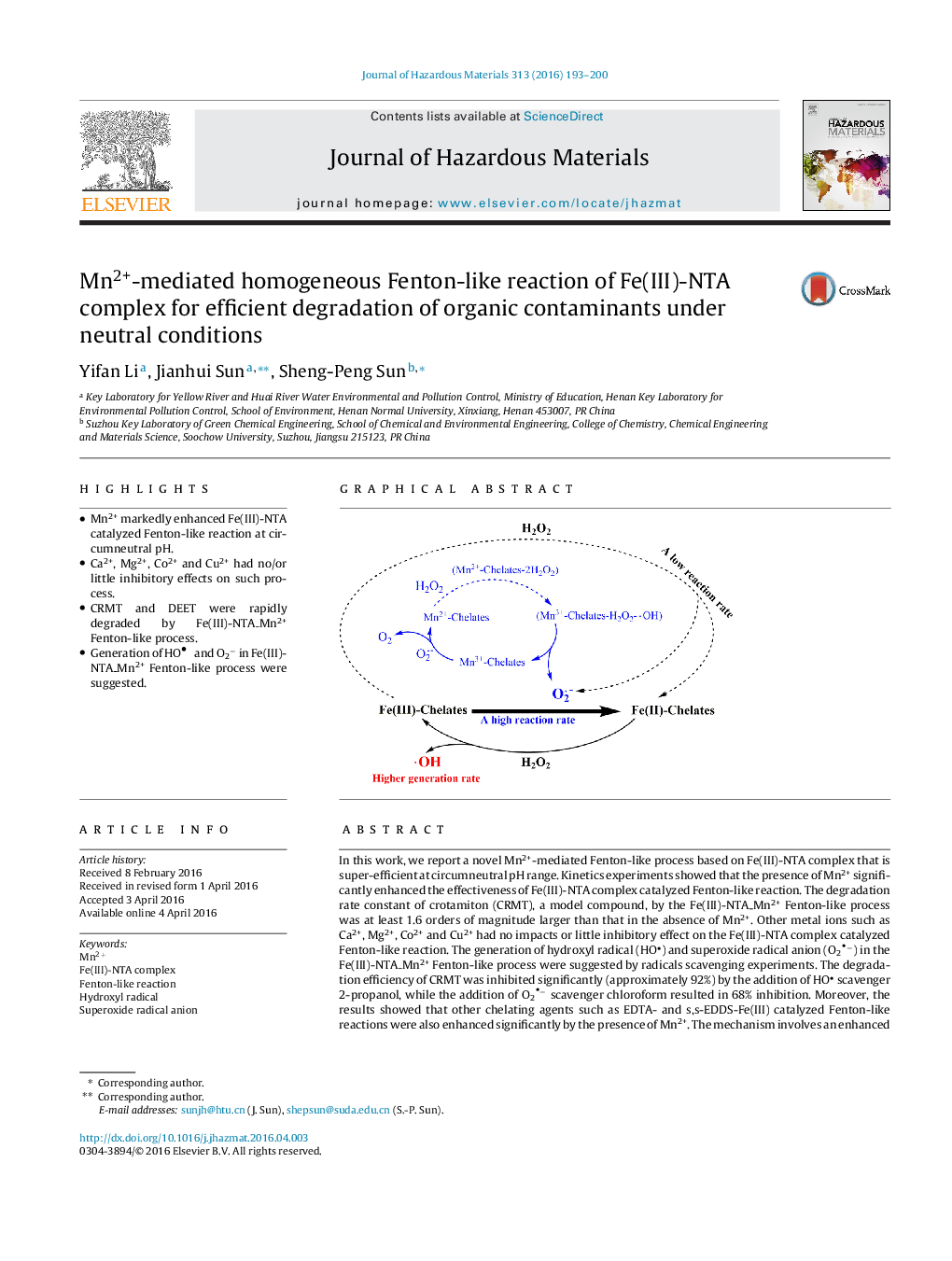| کد مقاله | کد نشریه | سال انتشار | مقاله انگلیسی | نسخه تمام متن |
|---|---|---|---|---|
| 575261 | 1453047 | 2016 | 8 صفحه PDF | دانلود رایگان |
• Mn2+ markedly enhanced Fe(III)-NTA catalyzed Fenton-like reaction at circumneutral pH.
• Ca2+, Mg2+, Co2+ and Cu2+ had no/or little inhibitory effects on such process.
• CRMT and DEET were rapidly degraded by Fe(III)-NTA_Mn2+ Fenton-like process.
• Generation of HO and O2− in Fe(III)-NTA_Mn2+ Fenton-like process were suggested.
In this work, we report a novel Mn2+-mediated Fenton-like process based on Fe(III)-NTA complex that is super-efficient at circumneutral pH range. Kinetics experiments showed that the presence of Mn2+ significantly enhanced the effectiveness of Fe(III)-NTA complex catalyzed Fenton-like reaction. The degradation rate constant of crotamiton (CRMT), a model compound, by the Fe(III)- NTA_Mn2+ Fenton-like process was at least 1.6 orders of magnitude larger than that in the absence of Mn2+. Other metal ions such as Ca2+, Mg2+, Co2+ and Cu2+ had no impacts or little inhibitory effect on the Fe(III)-NTA complex catalyzed Fenton-like reaction. The generation of hydroxyl radical (HO) and superoxide radical anion (O2−) in the Fe(III)-NTA_Mn2+ Fenton-like process were suggested by radicals scavenging experiments. The degradation efficiency of CRMT was inhibited significantly (approximately 92%) by the addition of HO scavenger 2-propanol, while the addition of O2− scavenger chloroform resulted in 68% inhibition. Moreover, the results showed that other chelating agents such as EDTA- and s,s-EDDS-Fe(III) catalyzed Fenton-like reactions were also enhanced significantly by the presence of Mn2+. The mechanism involves an enhanced generation of O2− from the reactions of Mn2+-chelates with H2O2, indirectly promoting the generation of HO by accelerating the reduction rate of Fe(III)-chelates to Fe(II)- chelates.
Figure optionsDownload as PowerPoint slide
Journal: Journal of Hazardous Materials - Volume 313, 5 August 2016, Pages 193–200
